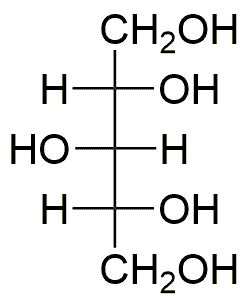Xylitol is widely utilized in research focused on
- Dental Care: Commonly found in sugar-free chewing gums and dental products, xylitol helps reduce cavity-causing bacteria, promoting better oral health.
- Food Industry: As a natural sweetener, it is used in various food products, especially for those labeled as sugar-free, providing sweetness with fewer calories.
- Pharmaceuticals: Xylitol serves as a sugar substitute in medications, particularly for diabetic patients, allowing for effective treatment without raising blood sugar levels.
- Cosmetics: In skincare products, xylitol acts as a humectant, helping to retain moisture and improve skin hydration, which is beneficial for dry skin formulations.
- Biotechnology: Researchers utilize xylitol in cell culture media as a carbon source, supporting the growth of various microorganisms and enhancing bioprocessing applications.
General Information
Properties
Safety and Regulations
Applications
Xylitol is widely utilized in research focused on
- Dental Care: Commonly found in sugar-free chewing gums and dental products, xylitol helps reduce cavity-causing bacteria, promoting better oral health.
- Food Industry: As a natural sweetener, it is used in various food products, especially for those labeled as sugar-free, providing sweetness with fewer calories.
- Pharmaceuticals: Xylitol serves as a sugar substitute in medications, particularly for diabetic patients, allowing for effective treatment without raising blood sugar levels.
- Cosmetics: In skincare products, xylitol acts as a humectant, helping to retain moisture and improve skin hydration, which is beneficial for dry skin formulations.
- Biotechnology: Researchers utilize xylitol in cell culture media as a carbon source, supporting the growth of various microorganisms and enhancing bioprocessing applications.
Documents
Safety Data Sheets (SDS)
The SDS provides comprehensive safety information on handling, storage, and disposal of the product.
Product Specification (PS)
The PS provides a comprehensive breakdown of the product’s properties, including chemical composition, physical state, purity, and storage requirements. It also details acceptable quality ranges and the product's intended applications.
Certificates of Analysis (COA)
Search for Certificates of Analysis (COA) by entering the products Lot Number. Lot and Batch Numbers can be found on a product’s label following the words ‘Lot’ or ‘Batch’.
*Catalog Number
*Lot Number
Certificates Of Origin (COO)
This COO confirms the country where the product was manufactured, and also details the materials and components used in it and whether it is derived from natural, synthetic, or other specific sources. This certificate may be required for customs, trade, and regulatory compliance.
*Catalog Number
*Lot Number
Safety Data Sheets (SDS)
The SDS provides comprehensive safety information on handling, storage, and disposal of the product.
DownloadProduct Specification (PS)
The PS provides a comprehensive breakdown of the product’s properties, including chemical composition, physical state, purity, and storage requirements. It also details acceptable quality ranges and the product's intended applications.
DownloadCertificates of Analysis (COA)
Search for Certificates of Analysis (COA) by entering the products Lot Number. Lot and Batch Numbers can be found on a product’s label following the words ‘Lot’ or ‘Batch’.
*Catalog Number
*Lot Number
Certificates Of Origin (COO)
This COO confirms the country where the product was manufactured, and also details the materials and components used in it and whether it is derived from natural, synthetic, or other specific sources. This certificate may be required for customs, trade, and regulatory compliance.


